
It’s May! The sun is shining, the birds are singing, the flowers are blooming, and your forsythia needs your attention.
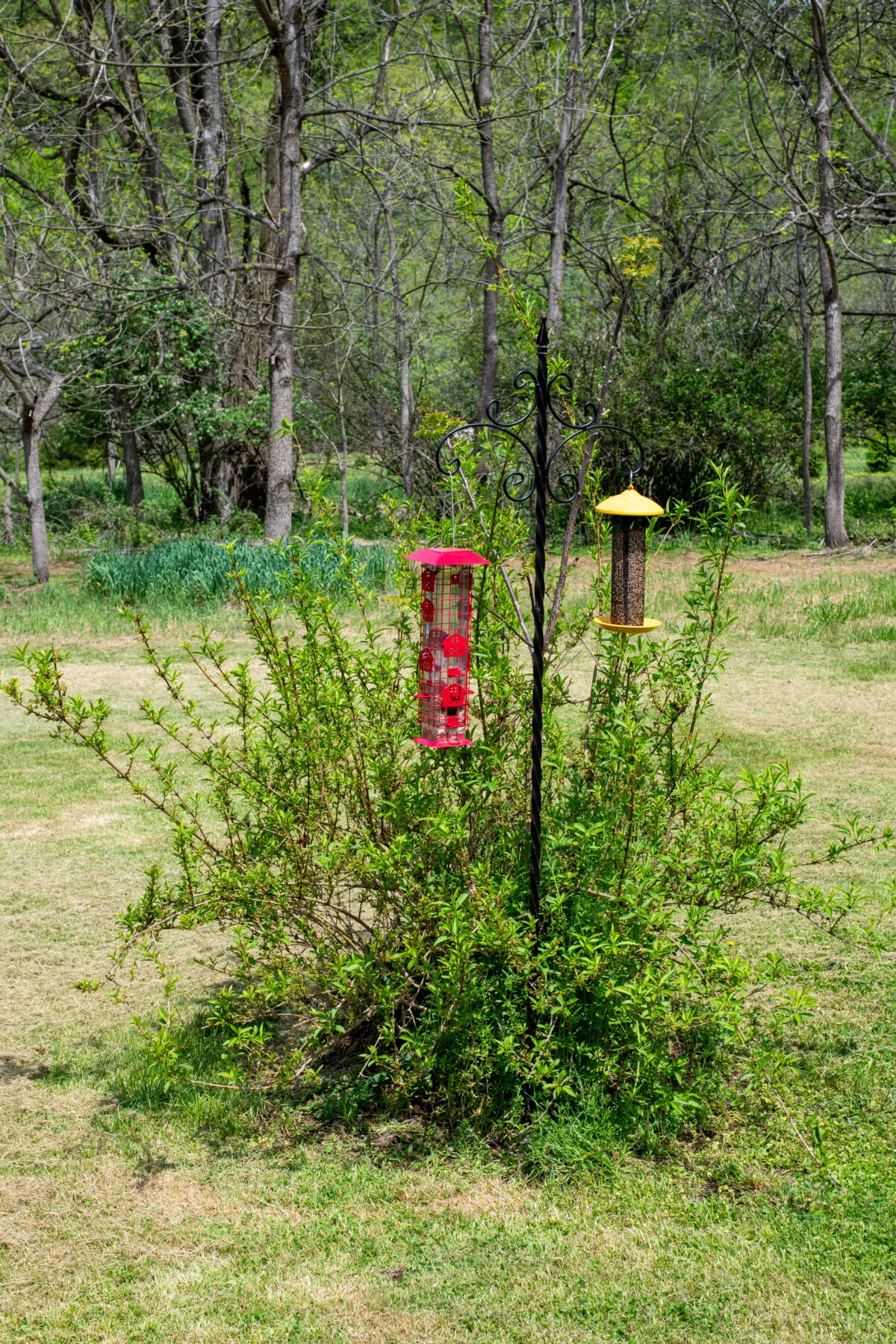
Once the golden blooms of early spring have faded and your forsythia is just another green shrub in the backyard, it’s time to make sure you get another round of glorious spring color next year. Grab your gardening gloves and your hand pruners. It’s time to prune forsythia bushes.
Why It’s Important to Prune in May
You might be thinking, can’t it wait? There are so many things I need to do. I have an entire garden I’m trying to get planted! My flower beds need to be mulched, and the lawn needs to be reseeded.
I get it. Spring is a busy time of year when it comes to taking care of your garden and yard. But the problem with waiting to prune your forsythia is that if you wait too long, you’ll be pruning off next year’s flower buds.
Forsythia are old-growth bloomers, which means that the flowers you enjoyed this spring were grown last year, so they technically bloom on “old wood.”
Shortly after the plant finishes blooming, it will begin a period of new growth, which includes next year’s flower buds. That’s why it’s important to prune your forsythia as soon as it has finished blooming. If you wait another month or so, you’ll be cutting off the buds for next spring.
Tools

You’ll likely want to wear a pair of gloves to protect your hands while you’re pruning. Aside from that, you’ll need at least a pair of secateurs (hand pruners) and perhaps a pair of loppers, or a small hand saw, depending on the size of your forsythia.
Naturally, you should ensure your tools have been sanitized before you begin pruning.
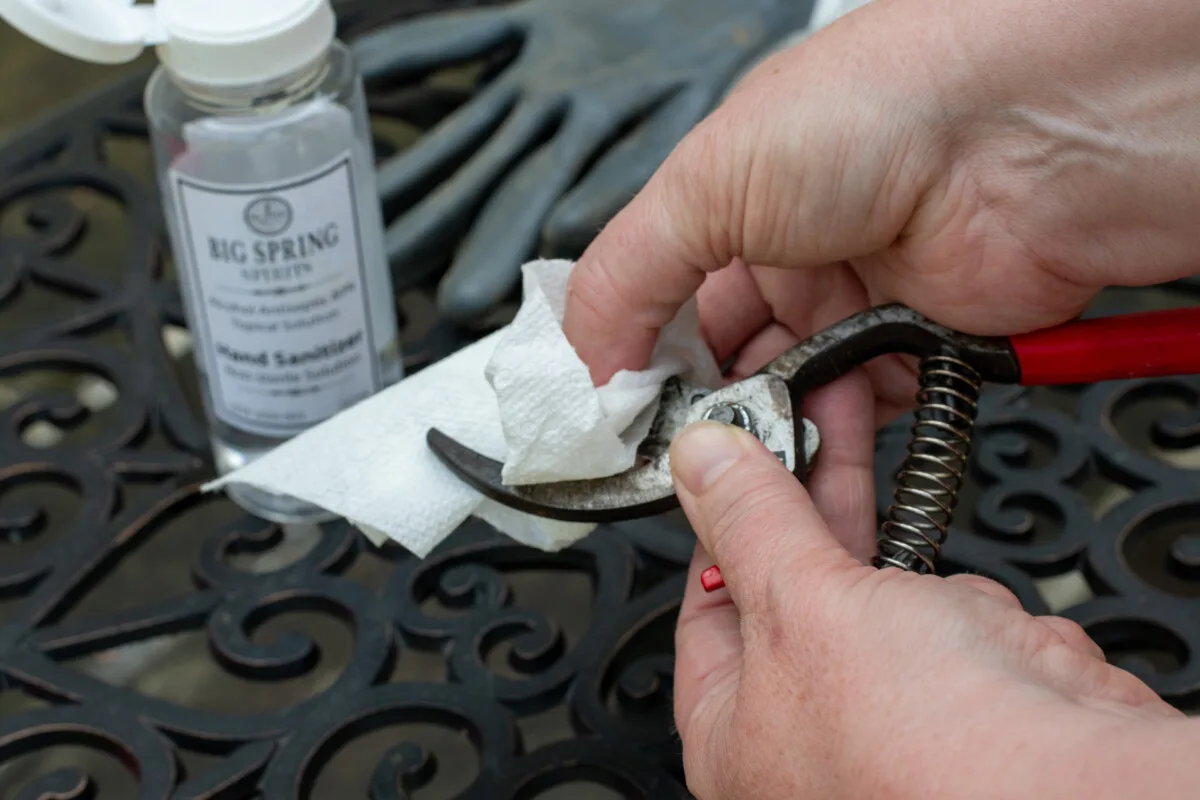
If you’ve got many shrubs to prune, maybe a wheelbarrow or yard cart to collect scraps would be a good idea, too.
Pruning Cuts: Heading & Thinning
You’ll essentially be making two types of cuts based on the outcome you hope to achieve – heading and thinning cuts.

Heading cuts are made just beyond a growth node and will stimulate lateral growth near the cut. These cuts are best made when you want to fill in an area or encourage new growth at that spot.

Thinning cuts are when you cut a stem at the very base of where it starts, whether that’s at the ground or where it comes from a larger branch. This will stop growth at that point. These types of cuts are best for thinning out (hence the name) or removing dead portions of a plant to encourage better airflow and open the plant up.
Because each cut will cause the plant to grow differently, it’s a good idea to take a little time to examine your forsythia before pruning.
How do you want it to grow in the future? Are there spots that are too sparse or too crowded? What is the overall look you want to achieve? Knowing these things before you dive in with your secateurs will help you decide how to cut each branch.

Here are a few things to take into consideration before you make your first cut.
Open up The Heart of the Forsythia
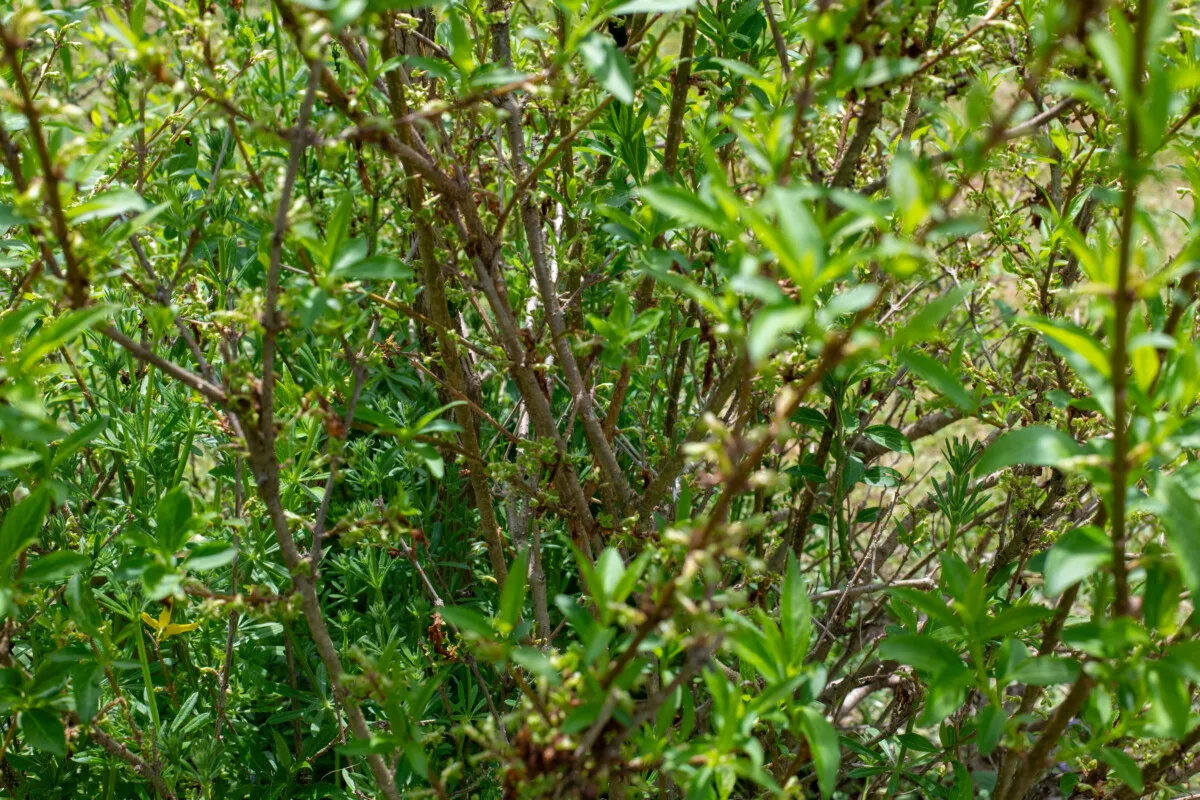
Forsythia can get pretty wild, growing unchecked. If the inside of the plant becomes too crowded, it won’t receive as much light and airflow as needed. You’ll often find many interior branches crossing one another when the heart of the bush is too crowded. All of these things can add up to fewer blooms and the potential for disease.
Once you’ve determined the exterior shape of the shrub you’re going for, don’t forget to consider the interior and whether or not it needs a little opening up.
Prune Out Crossing Branches
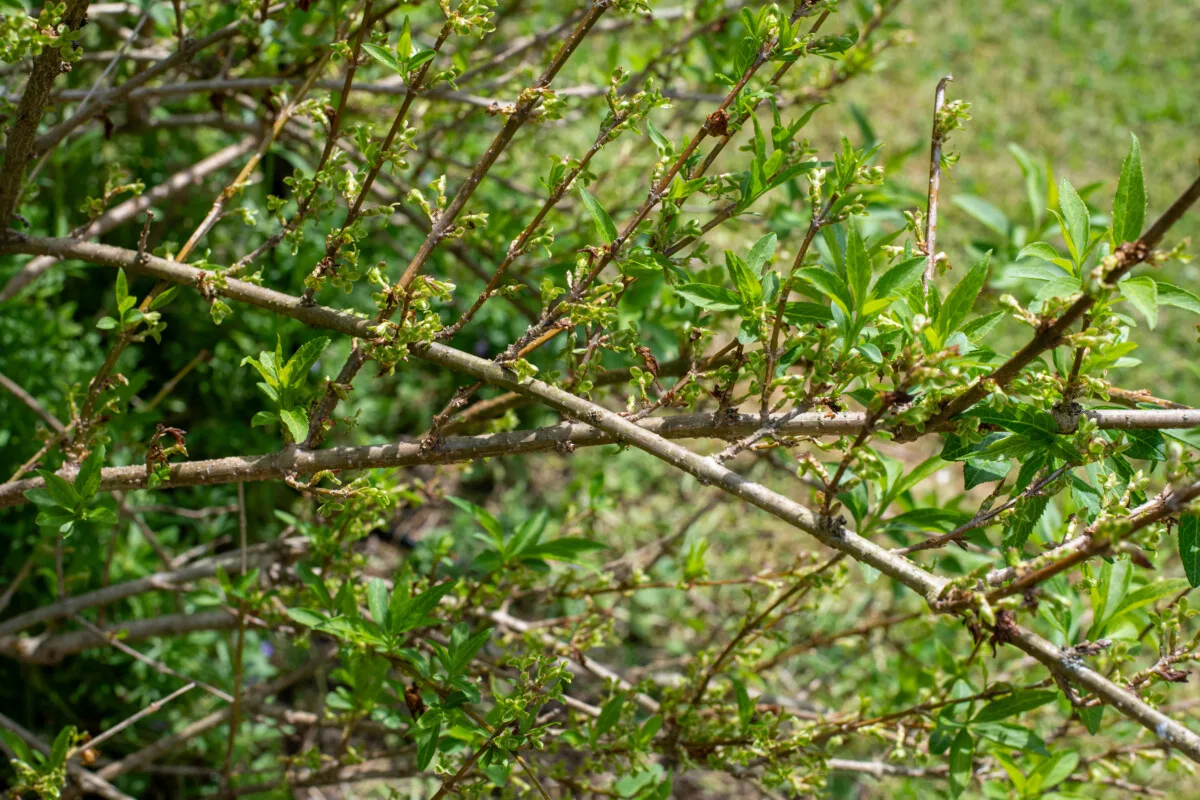
To prevent future problems, it’s a good idea to prune out branches that are crisscrossing and rubbing against one another. Branches that continually chafe end up wearing away the bark and open the plant up to disease. This could be either a heading or thinning cut, depending on how far back you want to take the stem and what kind of growth you want in that area.
Look for Noticeable Holes
If you’ve got any bare spots or holes in your forsythia, use heading cuts of nearby branches to fill in those gaps. You can also prune larger branches close to the ground (about a foot from the ground) to produce more prolific growth at the cut, which will help create a denser shrub overall.
Prune Out Suckers

You’ll use thinning cuts to remove suckers at the base of your shrub. These are the skinny, single stems that grow near the base of the plant. This new growth is aptly named because it draws energy from the main plant to establish these tiny new suckers. By removing them, you’ll allow the forsythia bush to put all of its energy into the main plant via new growth and blooms.
Rejuvenate an Older Plant
If you’ve got an older plant that has stopped putting out blossoms, it’s easy to give that forsythia a fresh start. Rather than trying to prune an older, overgrown forsythia, it’s best to cut it back hard. Cut the shrub back to within 6” from the ground.
Cutting back the old forsythia will encourage lots of new growth. Yes, it will take two to three years for it to fill in and begin reliably producing blooms, but it’s the best way to rejuvenate old plants that have stopped blooming.
New Growth and New Blooms
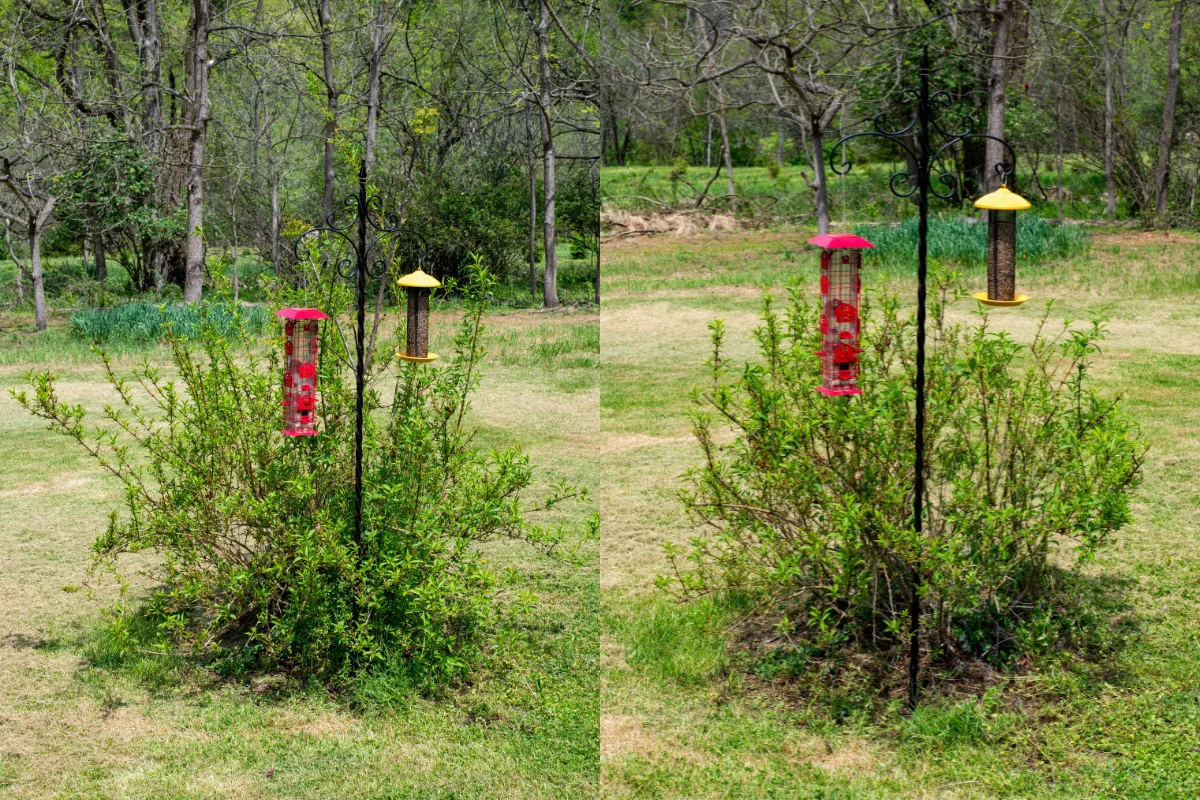
Because you’re pruning the plant, the root system (which remains the same size) can now move nutrients and water to fewer points, meaning your plant will have more resources to put into new growth. Often, the harder you prune, the more growth you can expect.
Don’t be surprised if you notice a lot more blooms on a fuller plant next year. The time and effort you put in now in May is worth it.
Propagate a Few Cuttings
While you’re pruning your forsythia, now is the perfect time to root some of those cuttings to plant new forsythia bushes.
Choose a few cuttings that are around a foot long.
Prepare a pot that’s at least 6” deep with a fluffy, moist potting mix. Or you can use nursery tree pots. (I also use these pots for my secret tomato potting-up trick.) For the potting mix, you don’t want something heavy. Coconut coir is great for rooting cuttings, or you can add perlite to an all-purpose potting mix to make it fluffier.
Strip the leaves from the bottom half of the cutting. Now, make a fresh, diagonal cut at the bottom of the stem. If you wish, you can dip it in rooting hormone. (I like to use raw honey; it’s one of several rooting hormone options you might have around your home.)
Push the cutting deep into the potting mix. You can do several in one pot. Now, cover the pot with a clear plastic baggie or cling wrap. Place a rubber band around the cover to keep the moisture inside. Place the forsythia cuttings somewhere warm with bright, indirect sunlight.
In a few weeks you should notice new growth on your cuttings. At this point, remove the cover and monitor the new cutting to ensure it doesn’t dry out while it acclimates to a drier environment. Once sufficient roots and new growth have developed, you can transplant your new forsythia shrub.
I know it’s one more thing to add to your busy spring to-do list, but it’s worth it next spring. Just when you think winter will never end, your forsythia will remind you that spring is right around the corner with a riot of shocking yellow blossoms.

Get the famous Rural Sprout newsletter delivered to your inbox.
Including Sunday ramblings from our editor, Tracey, as well as “What’s Up Wednesday” our roundup of what’s in season and new article updates and alerts.


